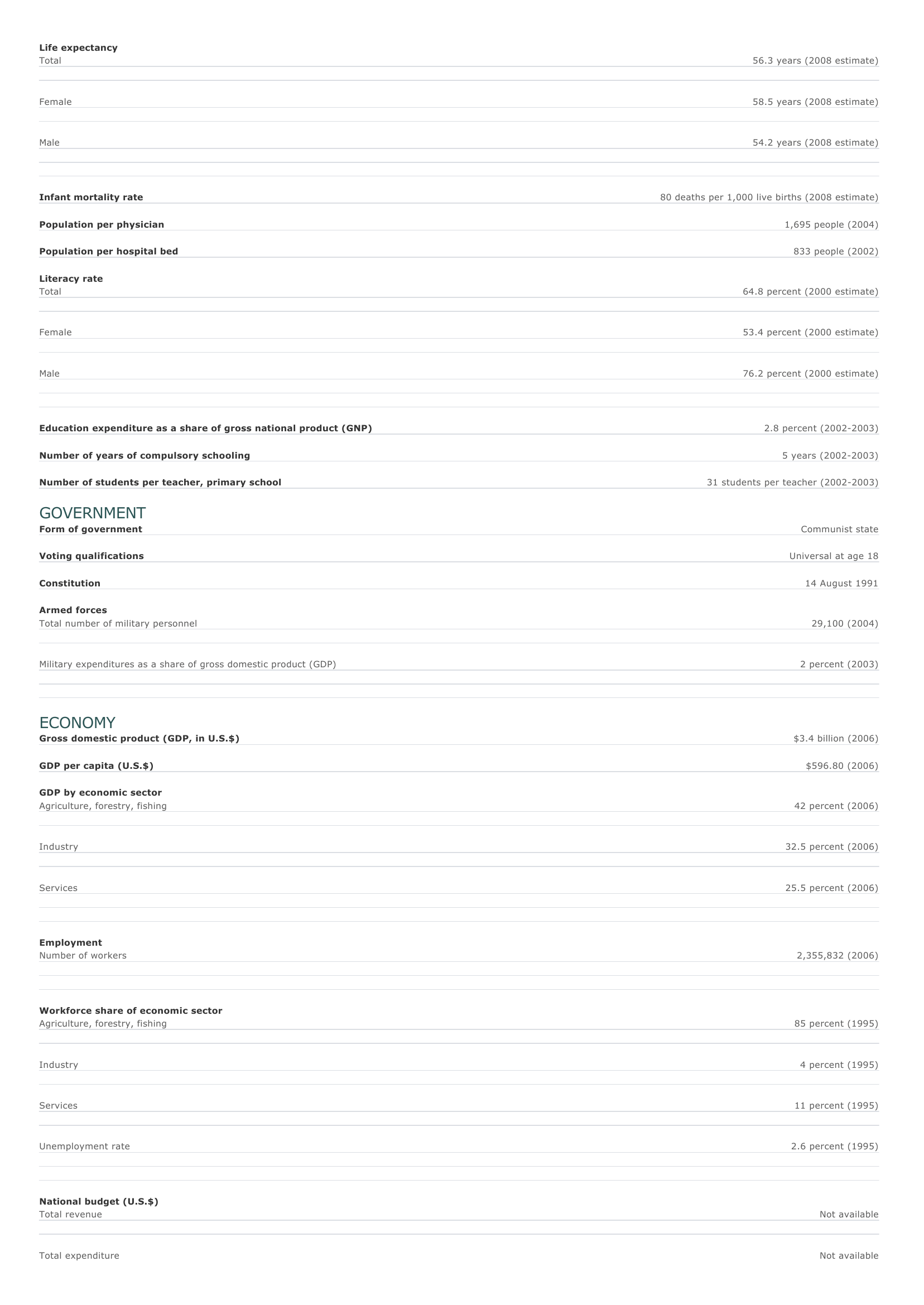
Laos Facts and Figures. BASIC FACTS Official name Capital Area Lao People's Democratic Republic Vientiane 236,800 sq km 91,430 sq mi PEOPLE Population 6,677,534 (2008 estimate) Population growth Population growth rate 2.34 percent (2008 estimate) Projected population in 2025 9,450,131 (2025 estimate) Projected population in 2050 13,176,153 (2050 estimate) Population density 29 persons per sq km (2008 estimate) 75 persons per sq mi (2008 estimate) Urban/rural distribution Share urban 22 percent (2005 estimate) Share rural 78 percent (2005 estimate) Largest cities, with population Vientiane 716,000 (2003 estimate) S avannakhét 97,000 (1995 estimate) Louangphrabang 68,000 (1995 estimate) P akxé 47,000 (1995 estimate) Ethnic groups Lao Lum (lowland Lao), including Lao and Tai 66 percent Lao Thoeng (Lao of the mountain slopes), including Khamu, Lamet, Laven, Sedang, and Nyaheun 24 percent Lao Sung (Lao of the mountaintops), including Hmong and Yao (Mien) 10 percent Languages Lao (official), numerous indigenous languages and dialects, French, English Religious affiliations Buddhist 49 percent Indigenous beliefs 42 percent Nonreligious 4 percent Christian 2 percent O ther 3 percent HEALTH AND EDUCATION Life expectancy Total 56.3 years (2008 estimate) Female 58.5 years (2008 estimate) Male 54.2 years (2008 estimate) Infant mortality rate Population per physician Population per hospital bed 80 deaths per 1,000 live births (2008 estimate) 1,695 people (2004) 833 people (2002) Literacy rate Total 64.8 percent (2000 estimate) Female 53.4 percent (2000 estimate) Male 76.2 percent (2000 estimate) Education expenditure as a share of gross national product (GNP) Number of years of compulsory schooling Number of students per teacher, primary school 2.8 percent (2002-2003) 5 years (2002-2003) 31 students per teacher (2002-2003) GOVERNMENT Form of government Communist state Voting qualifications Universal at age 18 Constitution 14 August 1991 Armed forces Total number of military personnel Military expenditures as a share of gross domestic product (GDP) 29,100 (2004) 2 percent (2003) ECONOMY Gross domestic product (GDP, in U.S.$) GDP per capita (U.S.$) GDP by economic sector Agriculture, forestry, fishing $3.4 billion (2006) $596.80 (2006) 42 percent (2006) I ndustry 32.5 percent (2006) Services 25.5 percent (2006) Employment Number of workers 2,355,832 (2006) Workforce share of economic sector Agriculture, forestry, fishing 85 percent (1995) I ndustry 4 percent (1995) Services 11 percent (1995) Unemployment rate 2.6 percent (1995) National budget (U.S.$) Total revenue Not available Total expenditure Not available Monetary unit 1 new kip (NK), or Ngeun Kip Mai, consisting of 100 at Major trade partners for exports Thailand, Vietnam, France, Germany, and Italy Major trade partners for imports Thailand, Vietnam, China, Singapore, and Japan ENERGY, COMMUNICATIONS, AND TRANSPORTATION Electricity production Electricity from thermal sources Electricity from hydroelectric sources 2.71 percent (2003 estimate) 97.29 percent (2003 estimate) Electricity from nuclear sources 0 percent (2003 estimate) Electricity from geothermal, solar, and wind sources 0 percent (2003 estimate) Number of radios per 1,000 people 145 (1997) Number of telephones per 1,000 people 13 (2005) Number of televisions per 1,000 people 9.4 (2000 estimate) Number of Internet hosts per 10,000 people Daily newspaper circulation per 1,000 people Number of motor vehicles per 1,000 people Paved road as a share of total roads 1.6 (2003) 4 (1996) 4.4 (1997) 14 percent (2003) SOURCES Basic Facts and People sections Area data are from the statistical bureaus of individual countries. Population, population growth rate, and population projections are from the United States Census Bureau, International Programs Center, International Data Base (IDB) (www.census.gov). Urban and rural population data are from the Food and Agriculture Organization (FAO) of the United Nations (UN), FAOSTAT database (www.fao.org). Largest cities population data and political divisions data are from the statistical bureaus of individual countries. Ethnic divisions and religion data are largely from the latest Central Intelligence Agency (CIA) World Factbook and from various country censuses and reports. Language data are largely from the Ethnologue, Languages of the World, Summer Institute of Linguistics International (www.sil.org). Health and Education section Life expectancy and infant mortality data are from the United States Census Bureau, International Programs Center, International database (IDB) (www.census.gov). Population per physician and population per hospital bed data are from the World Health Organization (WHO) (www.who.int). Education data are from the United Nations Educational, Scientific and Cultural Organization (UNESCO) database (www.unesco.org). Government section Government, independence, legislature, constitution, highest court, and voting qualifications data are largely from various government Web sites, the latest Europa World Yearbook, and the latest Central Intelligence Agency (CIA) World Factbook. The armed forces data is from Military Balance. Economy section Gross domestic product (GDP), GDP per capita, GDP by economic sectors, employment, and national budget data are from the World Bank database (www.worldbank.org). Monetary unit, agriculture, mining, manufacturing, exports, imports, and major trade partner information is from the statistical bureaus of individual countries, latest Europa World Yearbook, and various United Nations and International Monetary Fund (IMF) publications. Energy, Communication, and Transportation section Electricity information is from the Energy Information Administration (EIA) database (www.eia.doe.gov). Radio, telephone, television, and newspaper information is from the United Nations Educational, Scientific and Cultural Organization (UNESCO) database (www.unesco.org). Internet hosts, motor vehicles, and road data are from the World Bank database (www.worldbank.org). Note Figures may not total 100 percent due to rounding. Microsoft ® Encarta ® 2009. © 1993-2008 Microsoft Corporation. All rights reserved.











